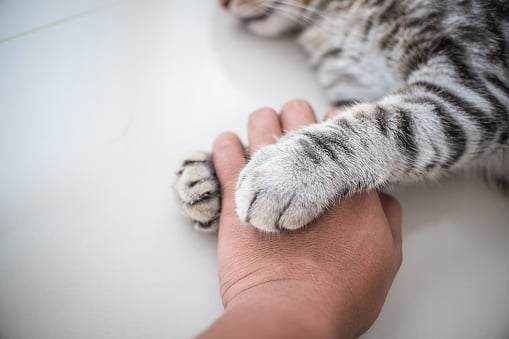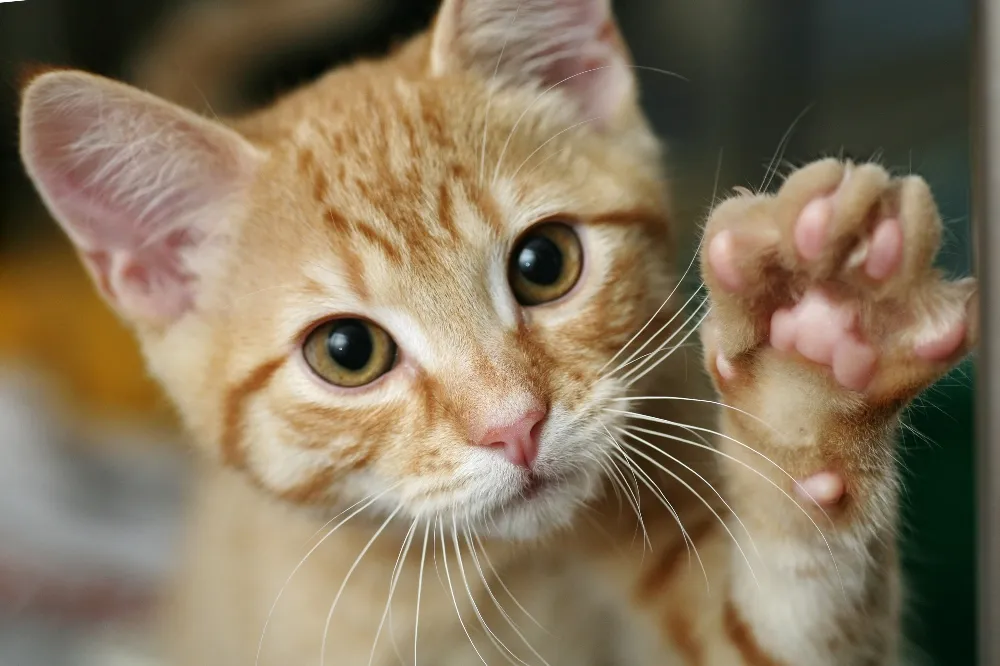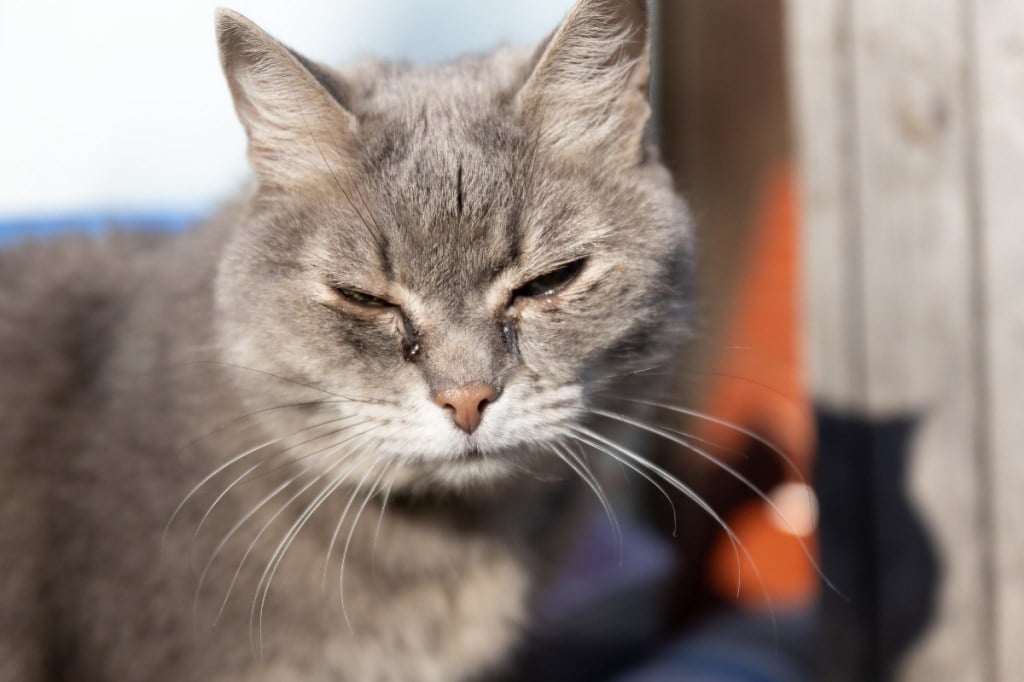Table of Contents
Last updated June 4, 2023.
It’s not like your kitty cat is about to take up journaling or is going to start writing you love letters (wouldn’t that be the best, though?), but many felines do have a “dominant” hand the same way that humans do. Consider it their preferred paw for cleaning themselves, eating, batting around feathery toys, or — as they do so well — pushing things off tables. We’re not just making wild claims, either. An actual study has been conducted on this topic!
The study on cats’ dominant paws
The premise of the study, which was conducted by Belfast’s Animal Behavior Centre at Queen’s University, was rather simple. Researchers gathered a small pool of felines of various breeds that consisted of 20 females and 24 males.
Owners of each pet were asked to observe their cats and track which paw they used first when walking down a flight of stairs, and which they used first when stepping into a litter box. They also took note of which side their cat preferred to lay on. Each of the three behaviors was observed a total of 50 spontaneous times at the pet’s home. An additional test, which was also repeated 50 times, had cats reach for a piece of food that was located inside of a three-tiered cat tower.
How to find out if your cat is right- or left-pawed
All you’ll need is a class and a cat treat or enticing pellet of food. Set the glass on the floor and drop the treat into it. Observe your cat as they use a favored paw to try and retrieve the treat. They may use both paws in their attempt, but the one that they use the most may be their preferred paw.
“Overall, 73% of cats had a paw preference when reaching for food, 70% had a ‘best paw’ to put forward when descending the stairs, and 66% had a paw preference for stepping into their litter tray,” reports The Guardian. “On the whole, the same paw was favored for each task. However, only 25% of cats had a preference for which side they lay on, with no link to the preferred paw for stepping.”
They also found that these left- and right-pawed preferences had a gender correlation. Male felines were more likely to use their left paws while females often preferred using their right paw. Interestingly, the same pattern holds for humans, as well. Men are more likely to be left-handed than women.
While it’s possible that this preference may be linked to sex hormones, as has been the case in previous animal-related studies, that’s not necessarily true for this one. A total of 44 cats observed in this study were neutered, which means that sex hormones weren’t at play. Instead, this sex breakdown is more likely a reflection of the neural architectural differences between male and female animals.

So… What Does All This Mean?
At this point, scientists still aren’t sure what causes a dominant paw preference.
“We just don’t know,” said Dr. Deborah Wells, a scientist and psychologist at Queen’s University Belfast who co-conducted the study. “There is something going on with differences between the brain structure and function, clearly, of male and female animals, but as to the specifics, we just don’t know yet.”
Even though we don’t wholly understand the exact reason why a cat chooses one paw over the other, Dr. Wells says that simply knowing what their dominant paw is can provide us insight. It tells us which part of the brain the cat relies on, and therefore its vulnerability to stress.
“Left-limbed animals, which rely more heavily on their right hemisphere for processing information, tend to show stronger fear responses, aggressive outbursts, and cope more poorly with stressful situations than animals that are right-limbed and rely more heavily on their left hemisphere for processing,” said Dr. Wells.
Contrarily, the right hemisphere of the brain processes negative emotions. Ambilateral animals, or those who do not indicate a strict right or left paw preference, have also demonstrated susceptibility to stress.
Bottom line
While there’s clearly more research that needs to be done on this topic, the findings are truly fascinating. To have even a little more insight into the minds of our cats, who do such a good job of keeping emotions hidden, can better help us understand their tendencies, personalities, and needs. We look forward to further studies!
If you know which paw your kitty favors, you probably consider him family. At Healthy Paws, we believe that too! Protect your four-legged friend (and your wallet too) by checking out our cat insurance. Start today by getting a free quote.






